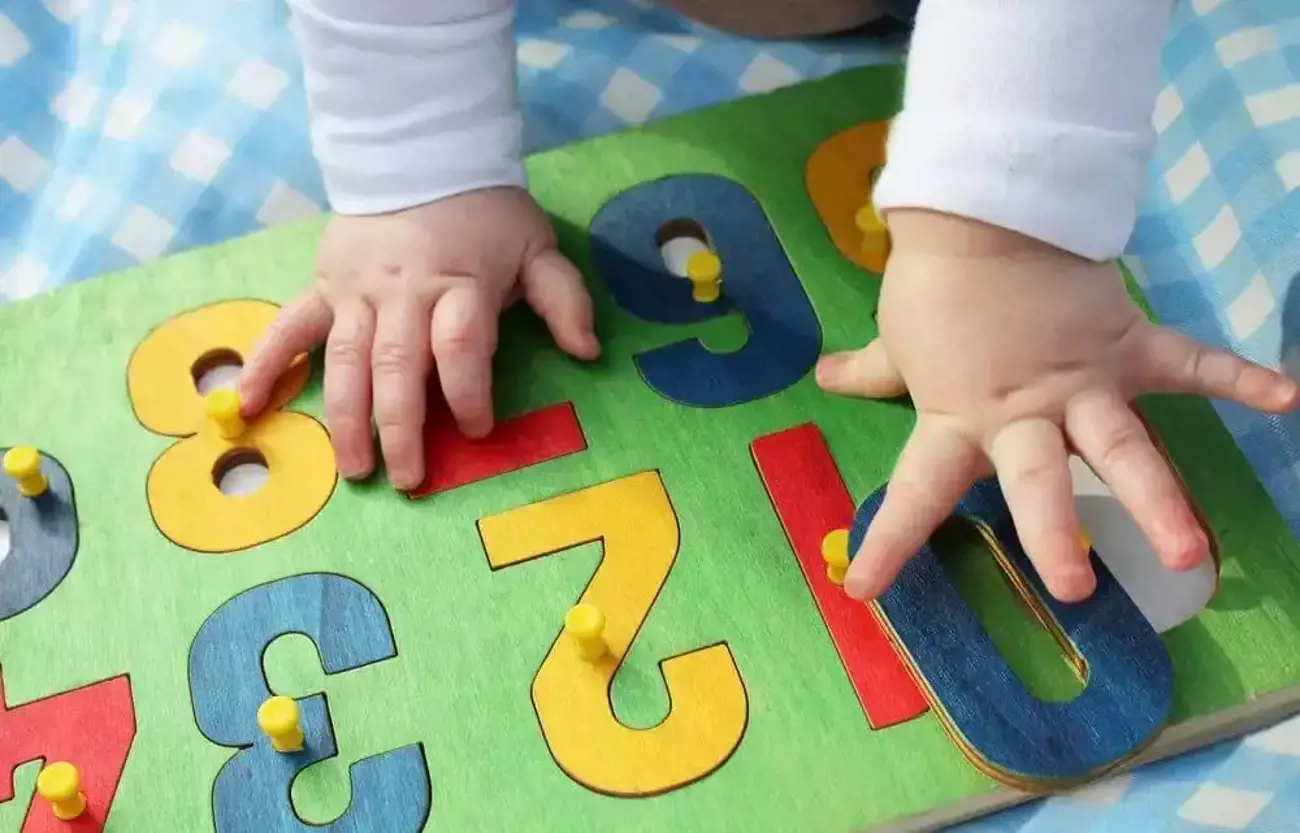The Child Care Subsidy (CCS) is the main government payment available to support families with the cost of child care.
The CCS replaced the Child Care Benefit and Child Care Rebate on 1 July 2018. This subsidy is paid directly to early childhood providers and passed on to families as a reduction in child care fees.
Typically, families pay their provider the difference between the fee charged and the subsidy amount (this is often referred to as ‘the gap').
Who is eligible for the Child Care Subsidy?
You or your partner may be eligible for the child care subsidy if you:
-
Care for your child at least two nights per fortnight, or have 14 per cent care, and
-
Are responsible for paying child care fees at an approved child care service (including centre-based day care, family day care, outside school hours care and In Home Care), and
-
Are experiencing temporary financial hardship, and
In addition, your child must:
-
Meet immunisation requirements (be up-to-date with the National Immunisation Program Schedule, be on a catch-up schedule or have an approved medical exemption), and
-
Not attending secondary school, unless an exemption applies. If your child does go to secondary school, you might be eligible for the CCS if you prove that they need supervision and they're aged 13 or under, or aged 14 to 18 and have a disability.
Eligible families or people who are responsible for paying child care fees have to meet the above criteria and apply for the child care subsidy to receive it.
There are additional eligibility criteria for In Home Care.
Also, some families are eligible for the Additional Child Care Subsidy on top of the CCS, and there's more about this below.
How much Child Care Subsidy will my family receive?
The amount of subsidised child care a family can get per child, per fortnight, depends on three factors, which we'll explain one by one:
-
Combined family income
-
How much work/activity the parents do
-
The hourly rate cap, based on the type of approved child care being used and child's age
1. Combined family income
The child care subsidy is means tested and the government uses your family's income estimate to work out your CCS percentage, which is the amount they'll subsidise.
A greater level of support fee reduction is offered to lower and middle income families, and the table below summarises the amount of subsidy currently available to families at various income levels:
| Combined family income per year | Subsidy per cent (of the actual fee charged or relevant hourly rate cap whichever is lower) |
| Up to $70,015 | 85 per cent of fees |
| More than $70,015 to below $175,015 | Between 85 per cent and 50 per cent of fees* |
| $175,015 to below $254,305 | 50 per cent of fees |
| $254,305 to below $344,305 | Between 50 per cent and 20 per cent of fees* |
| $344,305 to below $354,305 | 20 per cent of fees |
| $354,305 or more | Zero per cent** |
* The subsidy gradually decreases by one per cent for each additional $3,000 of family income.
** You can claim the CCS if your family income estimate is $354,305 or greater, and if you actually earn less than this cut-off figure, the government will pay the CCS you're entitled to, when they balance your payments after the financial year ends.
Previously, there's been an annual cap for the CCS of $10,655 per child, per financial year for families earning more than $190,015. However, as of 10 December 2021, this annual cap no longer applies.
It's also important to note that from 7 March 2022, families with more than one child in care (aged five or under) will get a higher CCS for their second child and younger children provided they all meet residency and immunisation requirements.
Your family may be eligible for this higher subsidy if you:
-
Earn less than $354,305, and
-
Have more than one child aged five or under in child care
Services Australia will work out which children get the higher subsidy by:
-
Assessing all children in your family unit
-
Identifying your standard rate child, and
-
Identifying your higher rate children
Your standard rate child is usually your eldest child and they will attract the standard subsidy. Your higher rate children will get a 30 per cent higher subsidy, up to a maximum of 95 per cent. If your family is already getting the CCS, these changes will be applied automatically, and there's more detail here.
2. How much work/activity the parents do
The CCS aims to encourage parents to return to work by reducing the cost of care for people in employment, and you need to do a recognised activity to get the CCS.
The activity test means that the more work or other approved activity you undertake. the more subsidised care you will be entitled to, up to a maximum of 100 hours per fortnight.
In families with two parents, both parents (unless an exemption applies) must meet the activity test and the parent with the lowest hours of work or recognised activity will determine how much subsidised care the family is entitled to per child, per fortnight.
There are four activity levels:
| Level | Hours of activity per fortnight | Maximum hours of subsidised care per fortnight |
| 1 | Less than 8 hours | Zero hours if you earn more than $70,015 24 hours if you earn $70,015 or less |
| 2 | More than 8 - 16 hours | 36 hours |
| 3 | More than 16 - 48 hours | 72 hours |
| 4 | More than 48 hours | 100 hours |
Recognised activities
To meet the activity test for the CCS, you can be involved in a wide range of paid and unpaid recognised activities, including:
-
Paid work, including self-employment
-
Paid or unpaid leave, including parental or maternity leave
-
Unpaid work for the family business
-
Unpaid work experience/internship
-
Actively setting up a business
-
Doing an approved course of education/study
-
Training for the purpose of up-skilling or improving employment prospects
-
Active job seeking
-
Volunteering
-
Other activities ‘on a case by case' basis
You can get up to 36 hours of subsidised care per fortnight if your only activity is volunteering or jobseeking, as long as you do this at least eight hours per fortnight.
Multiple activities (e.g. working, studying and volunteering) can be combined to determine the maximum hours of subsidised care you can get, and reasonable travel time between your child care service and recognised activity may also be included.
If you work casual or irregular hours, you need to give Services Australia the highest estimate of your hours.
The hours of subsidised approved care can be used in different ways, depending on how your child care and early learning provider charges you – per hour or per day.
Exemption from the activity test
In some instances, people don't have to meet the activity test to get hours of subsidised care.
For instance, you may be exempt from the CCS activity levels and able to access 36 hours of subsidised care per fortnight, if your preschool-aged child goes to an early education program in the year before big school.
Low-income families earning $69,390 or less per year can access 24 hours of subsidised care per child per fortnight without having to meet the activity test.
3. The hourly rate cap
The hourly rate cap, based on the type of approved child care your family uses and your child's age, is the third factor which affects the amount of CCS you receive.
Centre based day care attracts the highest subsidy, family day care comes next, and outside school hours care attracts the lowest subsidy.
The current, maximum hourly subsidies are as follows:
| Type of child care service | Maximum hourly rate cap |
| Centre based care (long day care and occasional care) | $12.31 or $10.77 for school aged children |
| Family day care | $11.40 |
| Outside school hours care (before, after and vacation care) | $10.77 or $12.31 for below school aged children |
| In Home Care | $33.47 (per family) |
It's important to note that child care providers charge their own fees and the rates above reflect the maximum subsidy amount, not the fees that will be charged.
These caps are the maximum provided under the child care subsidy and are used in combination with family income and activity levels to determine exactly how much subsidy a family receives.
Your child care subsidy percentage will be applied to the hourly rate cap or actual hourly fee charged by your service – whichever is lower. This means that:
-
If your child care provider charges less than the maximum hourly cap set by the government, you'll receive the subsidy as the applicable percentage of the fee charged, and
-
If your service charges more than the hourly rate cap, you'll have to pay the gap between what the subsidy covers and what the provider charges.
We have developed a Child Care Subsidy Calculator, which you can use to estimate the level of subsidy your family may be entitled to receive.
To ensure the subsidy estimate you are given is correct, we update the calculator everytime changes are made at a local or national government level.
To claim the Child Care Subsidy, click here.
And keep in mind that the government withholds five per cent of your child care subsidy to reduce the risk of an overpayment (which you'd need to pay back). This percentage can be changed to another withholding amount if you wish.
What is the Child Care Safety Net?
The Child Care Safety Net aims to make it easier for vulnerable or disadvantaged children, or those in regional or remote communities, to access high quality early education and care in the years before school.
It offers additional support to targeted groups and the Child Care Safety Net is comprised of three components:
-
The Additional Child Care Subsidy
-
The Community Child Care Fund
-
The Inclusion Support Program
1. The Additional Child Care Subsidy
The Additional Child Care Subsidy (ACCS) is a payment on top of the child care subsidy to help some families pay for child care.
To be eligible for an ACCS you need to be eligible for the CCS, and there are different types of ACCS people may get, depending on their circumstances:
-
The Temporary Financial Hardship subsidy assists those who are experiencing challenges such as a job loss, the death of a partner/child or a major disaster event
-
The Grandparent subsidy is for grandparent carers who get income support payments
-
The Child Wellbeing subsidy helps people who are caring for a child who's vulnerable or at risk of harm, abuse or neglect. If you think you might be eligible for this subsidy, ask your service about it, because they need to apply on your behalf, and
-
The Transition to Work subsidy assists people who are moving from welfare to work.
Those eligible for the first three types of ACCS subsidy can access 100 hours of subsidised care per child, per fortnight (for set periods of time) and the government will pay the lower of these:
-
100 per cent of the fee charged where it's equal to or less than the hourly rate cap, or
-
Up to 120 per cent of the hourly rate cap if the actual fee is higher than the cap
For the Transition to Work subsidy, the government pays 95 per cent of the fee charged or up to 95 per cent of the hourly rate cap, and the number of subsidised hours is worked out with an activity test.
2. The Community Child Care Fund
While this fund is not payable to families it aims to benefit families by improving access to high quality early childhood education and registered care services, particularly in disadvantaged, regional and remote communities, and Indigenous communities.
Under the fund, eligible child care services can apply for additional funding to reduce the barriers to accessing care, increase the number of child care places in areas where vacancies are scarce, and help them stay open when facing viability issues.
This initiative offers funding to child care providers to make it easier for them to include children with additional health needs within a mainstream program. Inclusion Agencies work with services to look for and remedy any barriers to inclusion.
The program supports providers by improving their capability and capacity to offer education and care for children with additional needs and offers these children an opportunity to play and learn alongside peers developing along the usual trajectory.



































